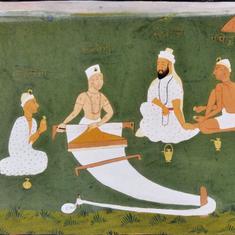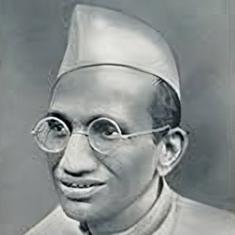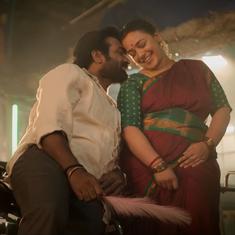But however dismissive one is of the opinion of others, one cannot help but take Mirza Asadullah Khan Ghalib seriously on this topic. Quite apart from that impressive name and his lofty standing as the Urdu poet, Ghalib has a well-deserved reputation as a mango-lover extraordinaire.
One only has to go through his letters – the first instance of Urdu prose, by the way – to realise that his passion for mangoes crosses the line into obsession. I have often gazed longingly at the names of mangoes mentioned by him in his missives to his friends, and tried to imagine what many of the unfamiliar ones would taste like.
In case you too are the gazing kind, here’s the list arranged in alphabetical order: Alphonso, Aziz-Pasand, Baadaami, Baaraah Maasi, Bishop, Bombay Green, Chausa, Dasehri, Dil-Pasand, Fajri Samar Bahisht, Fasli, Gulaabakhsh, Hamlet, Husn-aara, Jahaangir, Kishan Bhog, Khatta Meetha, Khudaadaad, Langra, Mahmood Samar, Malda, Malghoba, Naazuk-Pasand, Neelam, Nishaati, Ramkela, Ratol, Rahmat-e-Khaas, Roomaani, Safeda, Sarauli, Sinduri, Sultan-us-Samar, Totapari, Xavier, Zaafraani, Zard Aaloo.
What qualities does a mango have to possess to be called Naazuk-Pasand (one preferred by the delicate)? Or Rahmat-e-Khaas (a special grace)? What on earth is a Hamlet? Is the Baaraah Maasi really available twelve months a year? Who in their right minds would name a mango Zard Aaloo (yellow potato)?
And why, for heaven’s sake, is there no mention of Rasaal, that juicy fibrous mango of Hyderabad, of which the act of eating has appropriately been described as akin to sucking on a beard dipped in honey?
Ghalib’s mango-philia is so strong that he is not averse to humbling himself for a chance to be gifted the fruit. In a letter addressed to the caretaker of Calcutta’s Imambara, he writes ingratiatingly: “Not only am I a slave to my stomach I am a weak person as well. I desire that my table be adorned and that my soul be comforted. The wise ones know that both of these cravings can be satisfied by mangoes.”
This is followed by a disarming request for the mutawalli to “remember” Ghalib “twice or thrice” before the mango season ends, though he worries that this may be too insufficient to comfort “your humble servant”.
Ghalib’s concern isn’t without basis, for he certainly had a voracious appetite for the fruit. As a 60-year-old, he laments in a letter that he can no longer eat “more than ten or twelve at a sitting... and if they are large ones, then a mere six or seven. Alas, the days of youth have come to an end, indeed, the days of life itself have come to an end."
Altaf Hussain Hali, Ghalib’s student and biographer, records three stories about Ghalib and mangoes in his book Yaadgaar-e Ghalib, that have found their way into popular lore. The best-known is the one of Hakeem Raziuddin Khan, who while visiting Ghalib noted that a passing donkey had just sniffed at a mango peel and kept moving along. Look, said the Hakeem, even donkeys don’t eat mangoes. True, replied the poet, donkeys don’t eat mangoes.
Then there is the one about Ghalib accompanying Bahadur Shah Zafar, in the orchard of Baagh-e Hayaat Bakhsh, whose fruit was reserved for the nobility. Ghalib peered at the mangoes with sufficient intent for Zafar to ask what he was looking for. Ghalib replied in a calculated fashion:
I have heard the elders say:
bar sar-e har daana ba-navishta ayaañ
ka-een fulaañ ibn-e fulaañ ibn-e fulaañ
(On every piece one can see written quite clearly
That this is for so-and-so, son of so-and-so, son of so-and-so)
Perhaps, said the canny old man, I can spot the names of my ancestors on these fruits. Zafar got the message and Ghalib his case of mangoes.
The third story is of a gathering where the virtues of mangoes were being discussed. Maulana Fazl-e Haq turned to Ghalib and asked him for his opinion. Mangoes, said Ghalib, need to satisfy only two conditions. One, that they be sweet, and two, plentiful.
It’s hardly surprising then that Ghalib composed a masnavi titled dar sifat-e ambaah (On the Attributes of Mangoes), which included lines such as:
mujhse poochho, tumheñ khabar kya hai
aam ke aage neyshakar kya hai...
ya ye hoga ke fart-e rafa’at se
baagh-baanoñ ne baagh-e jannat se
angabeeñ ke, ba hukm-e rabb-in-naas
bhar ke bheje haiñ sar-ba-mohr gilaas
ask me! for what do you know?
a mango is far sweeter than sugarcane...
perhaps from the great heights above
the gardeners of heaven’s orchards
have sent, by the order of God
wine filled in sealed glasses
I only wish Ghalib had added the following couplet:
aur jinse ho dil hamesha shaad
vo to hote hai aam-e Hyderabad
and those that always please one’s heart
are the mangoes of Hyderabad.










